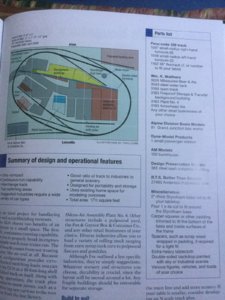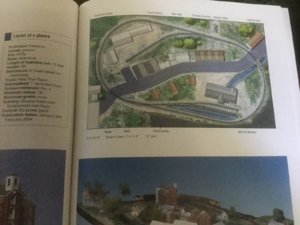ACL-CSX
Founder, NHRR; Founder, Nathan's Crossroads
Regulars in the coffee shop already know this, but I wanted to present it to the rest of the forum as well.
The railroad requisition department has recently given the green light for the acquisition of a 4' by 5' chunk of real estate that will house my new HO switching layout. The railroad and area served will both be freelanced. I am designing the layout to be functional and fun without resorting to the status of being a puzzle layout. Plans are to make it fold up against the wall when not in use, but also to be built in a manner that it can easily be incorporated into a larger layout later or to serve as the base for expansion later. I plan to scratch build all structures, being as detail oriented as possible. I know that there are lots of parts that no one but I will know are detailed, but that's enough for me. I had originally planned an N scale layout around the cotton industry, and plan to roll that over to my new HO layout as well. The area used will be broken up into a horseshoe shape with each portion being 18" I width. All that being said, here's what I am in need of assistance with:
• What type of switches are best to use? (#4, #6, etc) I am using primarily Atlas Code 100 and am unfamiliar with the difference between a standard snap turn out and the rest.
• This will be strictly a freight layout since that is what all of my current HO equipment is, so what's the best radius track to use? I have 15", 18", and 22".
• What are the best industries to use associated with the processing of raw cotton?
I am planning to model late 60s to early 70s rural South Carolina, so I am not too worried about style of building as much as era correctness. It may be freelance, but i want the time period to look correct. I plan to add in prototypical roads as space allows, but for now everything will be made up so I will be leaning very hard on my modeler's license. Any ideas would be much appreciated.
The railroad requisition department has recently given the green light for the acquisition of a 4' by 5' chunk of real estate that will house my new HO switching layout. The railroad and area served will both be freelanced. I am designing the layout to be functional and fun without resorting to the status of being a puzzle layout. Plans are to make it fold up against the wall when not in use, but also to be built in a manner that it can easily be incorporated into a larger layout later or to serve as the base for expansion later. I plan to scratch build all structures, being as detail oriented as possible. I know that there are lots of parts that no one but I will know are detailed, but that's enough for me. I had originally planned an N scale layout around the cotton industry, and plan to roll that over to my new HO layout as well. The area used will be broken up into a horseshoe shape with each portion being 18" I width. All that being said, here's what I am in need of assistance with:
• What type of switches are best to use? (#4, #6, etc) I am using primarily Atlas Code 100 and am unfamiliar with the difference between a standard snap turn out and the rest.
• This will be strictly a freight layout since that is what all of my current HO equipment is, so what's the best radius track to use? I have 15", 18", and 22".
• What are the best industries to use associated with the processing of raw cotton?
I am planning to model late 60s to early 70s rural South Carolina, so I am not too worried about style of building as much as era correctness. It may be freelance, but i want the time period to look correct. I plan to add in prototypical roads as space allows, but for now everything will be made up so I will be leaning very hard on my modeler's license. Any ideas would be much appreciated.



